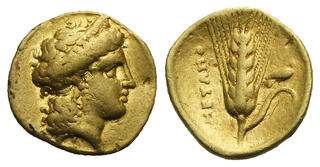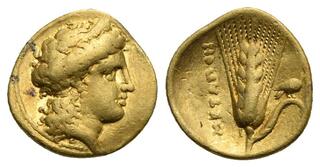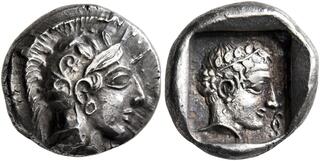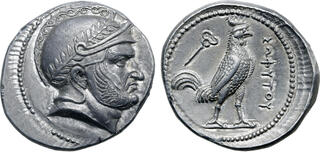Match 1:
Match 2:
Match 3:
Match 4:
Match 5:
| Leu Numismatik AG > Auction 15 | Auction date: 1 June 2024 |
| Lot number: 97 Price realized: This lot is for sale in an upcoming auction - Bid on this lot  | |
| Lot description: IONIA. Ephesos. Circa 650-600 BC. Trite or 1/3 Stater (Electrum, 11 mm, 4.64 g), Lydo-Milesian standard. Bee viewed from above. Rev. Incuse punch composed of two incuse squares with irregular indentations, separated by low convex vertical line. BMC -. BMFA -. Karwiese II.1, Type 2, 6-8 (same dies). Linzalone -. Pozzi -. Rosen 257 (same dies). SNG Kayhan -. SNG von Aulock 1768 (same dies). Weidauer 29-32 (same dies). Struck from the usual somewhat worn dies, otherwise, very fine. From a European collection, formed before 2005. Given its archaic appearance and its occurrence in groups with older pieces, the dating of the early Ephesian bee series to the first half of the 6th century BC, as commonly found in the scientific literature and auction descriptions, is too late; it certainly also belongs to the 7th century BC. Furthermore, it was previously unnoticed by researchers that a complete series of tritai, characterized by an irregular rough convex structure on the obverse and previously attributed to an 'uncertain Ionian mint' (such as BMFA 1749, Rosen 253, and SNG von Aulock 7761), were minted using the same die pair as our bee. Over time, this die pair gradually wore down until the motif became unrecognizable, as evidenced by lots 98-105 below. If the attribution of the bees to Ephesos is correct, then the other tritai also belong there, where they would constitute some of the earliest civic coinage in history. Interestingly, none of these bees appear in the Artemision finds, raising the question of whether they truly originate from Ephesos. However, the absence of our type in the Artemision hoard has no significance for dating the coins to the 7th century BC, as both the fabric and style, as well as their occurrence alongside other undoubtedly archaic types like lots 90-96 above, clearly point to a very early production. Estimate: 1000 CHF | 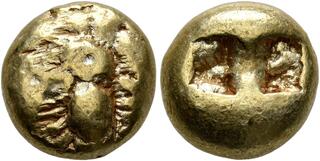 |
Match 6:


